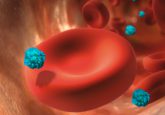Could a new prostate cancer screening approach reduce overdiagnosis and unnecessary biopsies?

Preliminary results from the Finnish ProScreen randomized trial suggest that integrating prostate-specific antigen (PSA) and biomarker testing with MRI could lead to notable improvements in prostate cancer screening, with increased detection and reduced overdiagnosis.
Prostate cancer is the most common cancer in men and the second leading cause of cancer death in the US, following lung cancer. Unfortunately, prostate cancer can be particularly difficult to identify as it can often develop undetected for years without clinical symptoms. Currently, one of the best ways to spot prostate cancer early is through screening, which typically involves a blood test measuring PSA levels. If PSA levels are abnormal, a patient may be referred for a biopsy to confirm the absence or presence of prostate cancer.
However, PSA tests are unreliable and often grant false-positive results. As a result, only around 25% of men who have a prostate biopsy due to an elevated PSA level are found to actually have prostate cancer. These current shortfalls in PSA testing present a clinical need to reduce overdiagnosis and unnecessary biopsies.
The ProScreen trial, led by Anssi Auvinen of Tampere University (Finland), suggests that a novel three-phase screening protocol, comprising an initial PSA test, followed by a kallikrein panel if PSA is high, and then an MRI for those with a high kallikrein panel score, could reduce overdiagnosis of low-grade prostate cancer and avoid unnecessary biopsies compared to traditional screening methods.
Among the 7744 men between the ages of 50−63 who underwent this new screening approach, 32 low-grade prostate cancers and 128 high-grade prostate cancers were identified.
Interestingly, for an additional 7457 men who were invited but refused participation in the screening, a smaller number of prostate cancers were detected (seven low-grade and 44 high-grade). This contrast in the number of detected cancers between the groups suggests that the screening strategy effectively identified cancers that might have otherwise gone undetected.
Also notably, for the screening group, the detection rate for high-grade cancers in this study (2.07%) corresponds well with initial screening in the European Randomized Study of Screening for Prostate Cancer trial (1.8%), yet the current study reduced the incidence of overdiagnosis of low-grade disease (0.4% compared to 3.2% respectively).
Jeffrey Tosoian, an assistant professor at Vanderbilt University Medical Center (TN, USA), and colleagues highlight the importance of these findings: “Although prior studies have demonstrated the benefits and harms of PSA screening followed by systematic biopsy, the current trial informs a more contemporary, pragmatic approach to screening, with appropriate use of biomarkers and imaging to optimize patient selection for biopsy,” they explained.
While the initial findings are promising, long-term benefits and potential limitations of this screening approach still need to be determined through ongoing follow-up. Nevertheless, these early results suggest that incorporating advanced diagnostic tools into prostate cancer screening holds promise for improving detection while minimizing overdiagnosis.






